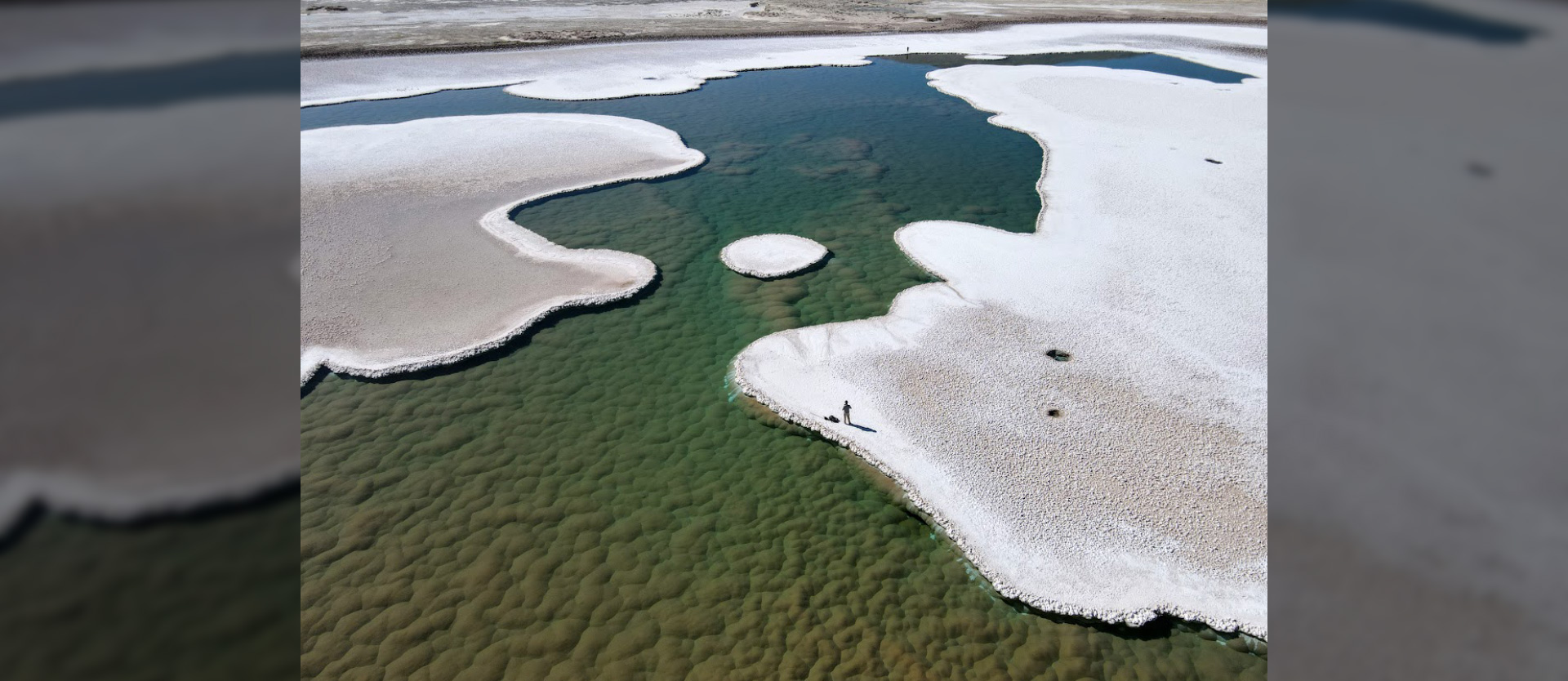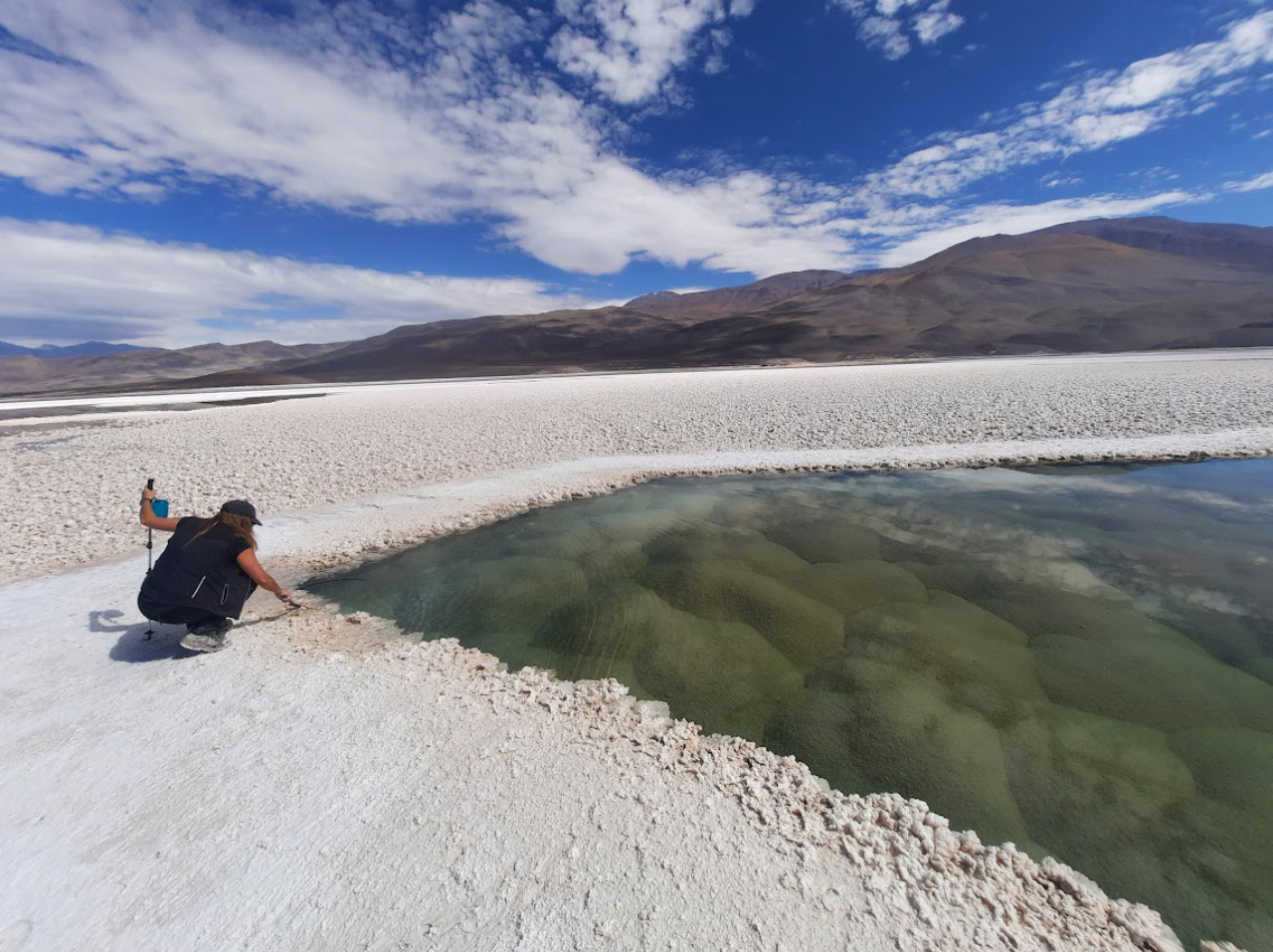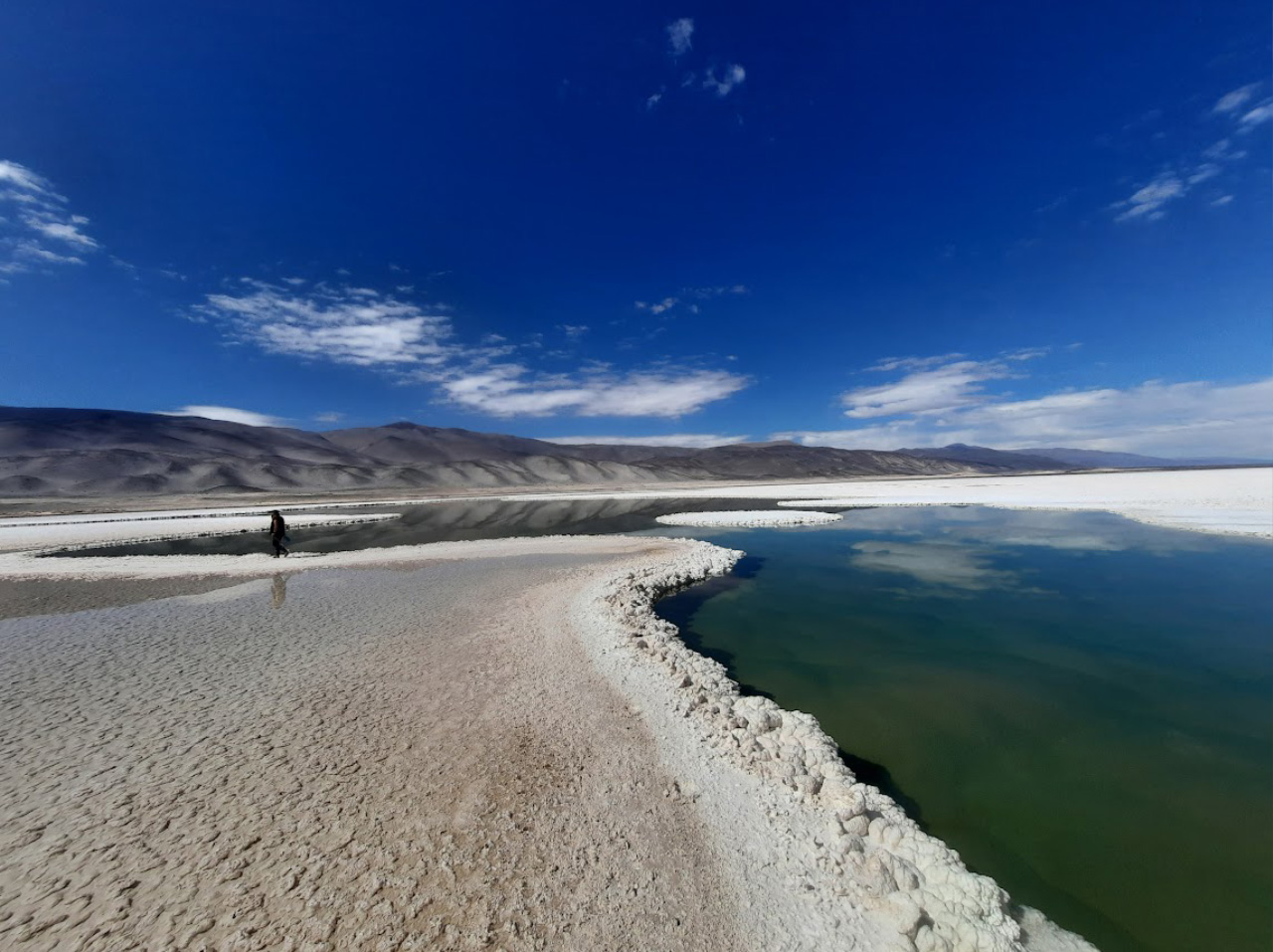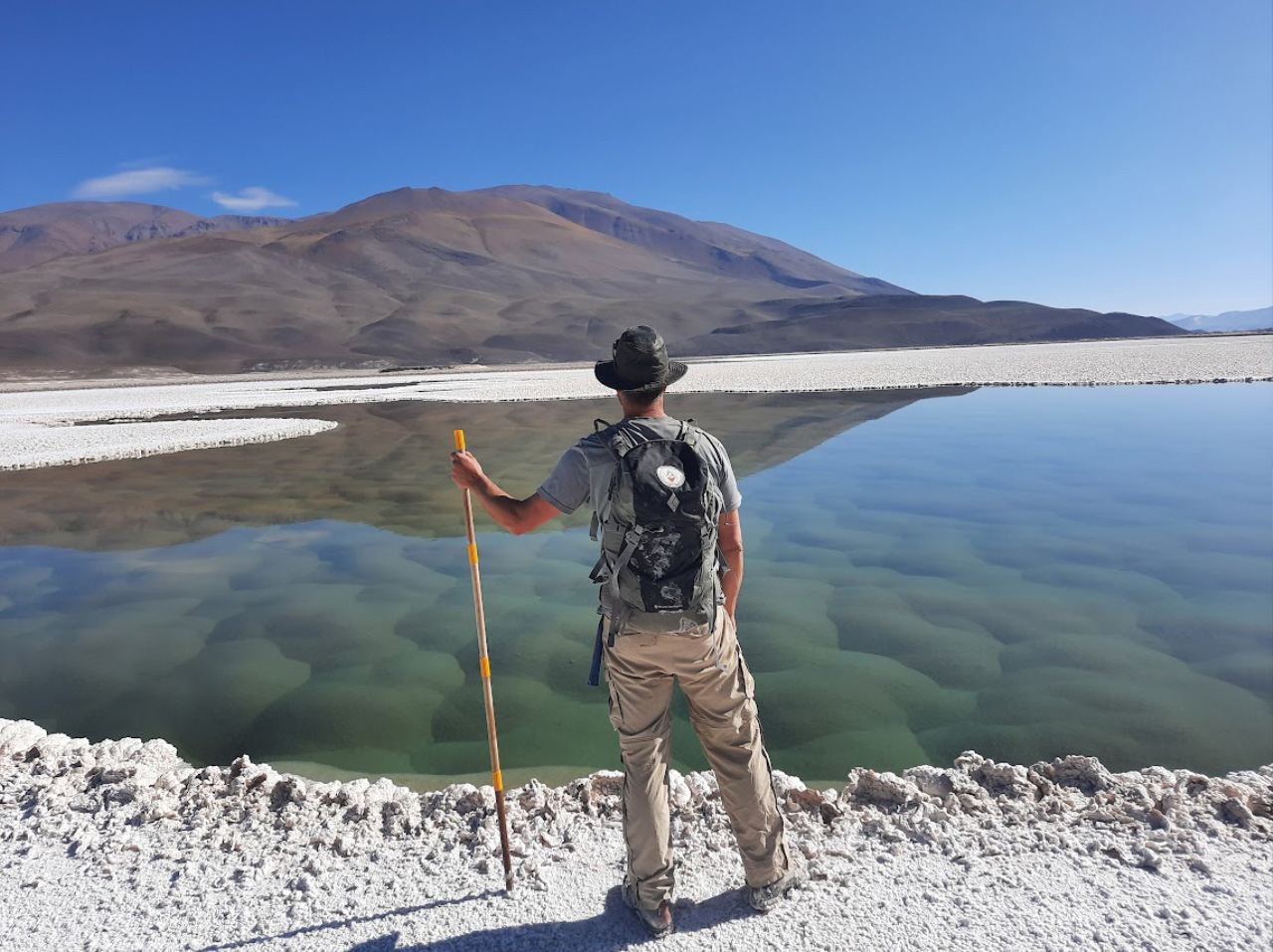
Mysterious lagoon

In the course of his career, Brain Hynek travelled to some of the most extreme environments on Earth: he wanted to understand how life could thrive on alien planets and moons. The geologist had climbed the world's highest active volcano, Ojos del Salado, on the border between Argentina and Chile, and travelled to Antarctica to search for meteorites. But he had never seen anything like the lagoon landscape deep in the Atacama Desert in Argentina. Well-hidden between high mountains, a network of twelve lagoons stretches over around 25 hectares.

This unreal landscape was formed by cyanobacteria. These algae produce so-called stromatolites. These are fine-layered, mostly calcareous sedimentary rocks that look like nodules, columns or wavy layers. Stromatolites have existed on earth for millions of years. However, they looked somewhat different in the Palaeozoic era than they do today. The mounds in the water of the Atacama lagoons look much more like some of these archaean stromatholites than those found on Earth today.

Their rock layers consist mainly of gypsum. The mineral was found in many fossil stromatolites, but it is missing in almost all modern stromatolites. Biologically, the prehistoric stromatolites consisted of an outer layer with photosynthetic microbes, the so-called cyanobacteria, and a pink-colored core rich in archaea. Archaea are single-celled organisms that are often found in extreme environments on Earth. "We believe that these mounds actually grew from the microbes, as was the case with the oldest stromatolite forms on Earth," says Brian Hynek.
Why the archaic prehistoric forms formed in this harsh place is not clear. The environment of the lagoon could be similar to the conditions on ancient Earth, according to Hynek. The water is salty and acidic and exposed to strong solar radiation due to the altitude.
The unusual rock formations could give scientists an insight into the origin of life on Mars, which resembled Earth billions of years ago. "If life on Mars ever evolved to the fossil level, it likely looked like this," Hynek said. "Understanding these modern communities on Earth could give us insight into what we should look for when searching for similar features in Martian rocks." Hynek and his team now want to find out how the microbes manage to survive the harsh conditions.

However, the scientists are running out of time. A company has already leased the area to mine lithium there. Once drilling begins, the Atacama lagoons could be irretrievably destroyed. "The unique ecosystem could be gone within a few years," says Hynek. "We hope that we can protect some of these areas or at least describe them in detail before they are lost forever."
Internet: www.colorado.edu/geologicalsciences/brian-hynek












